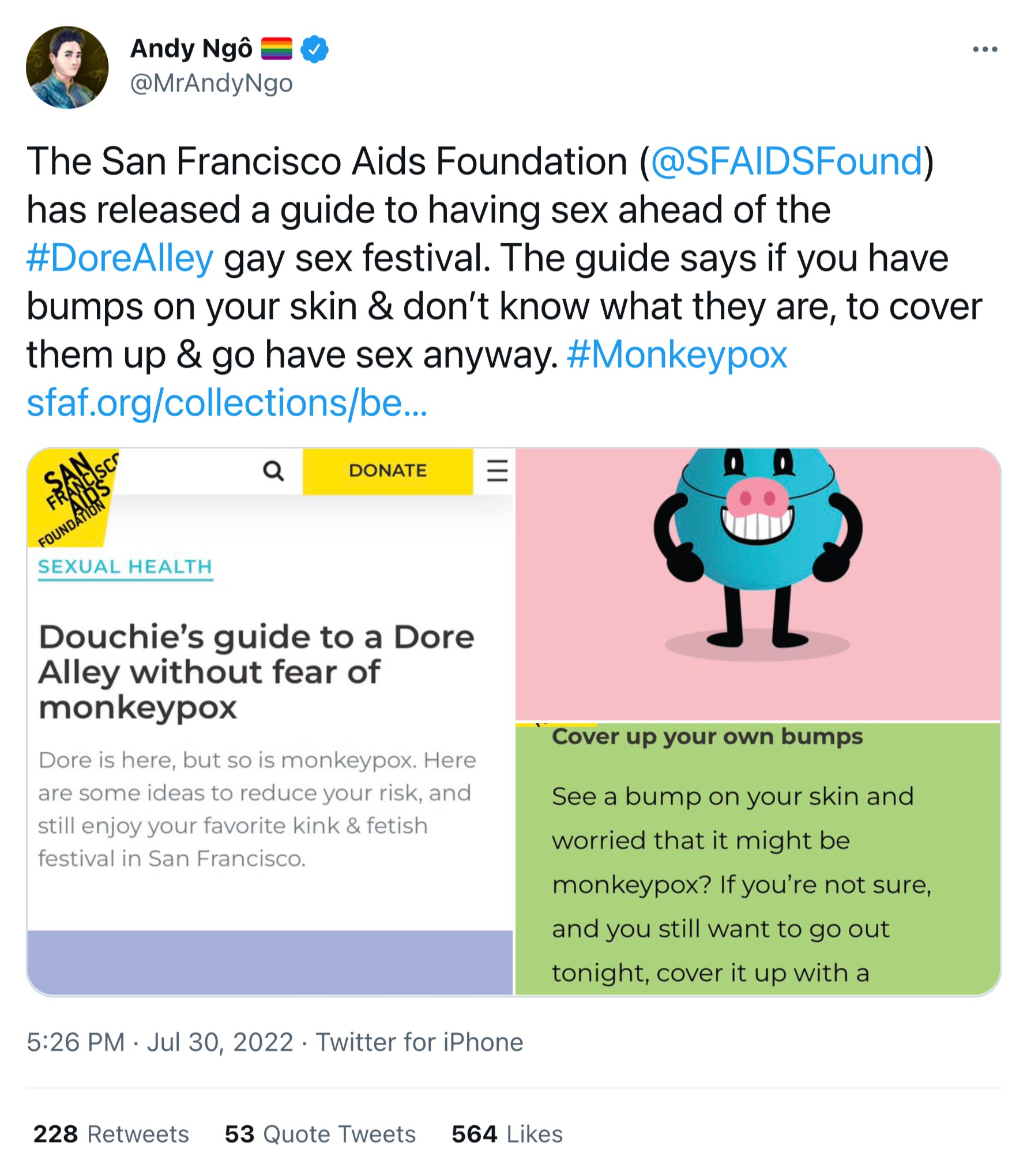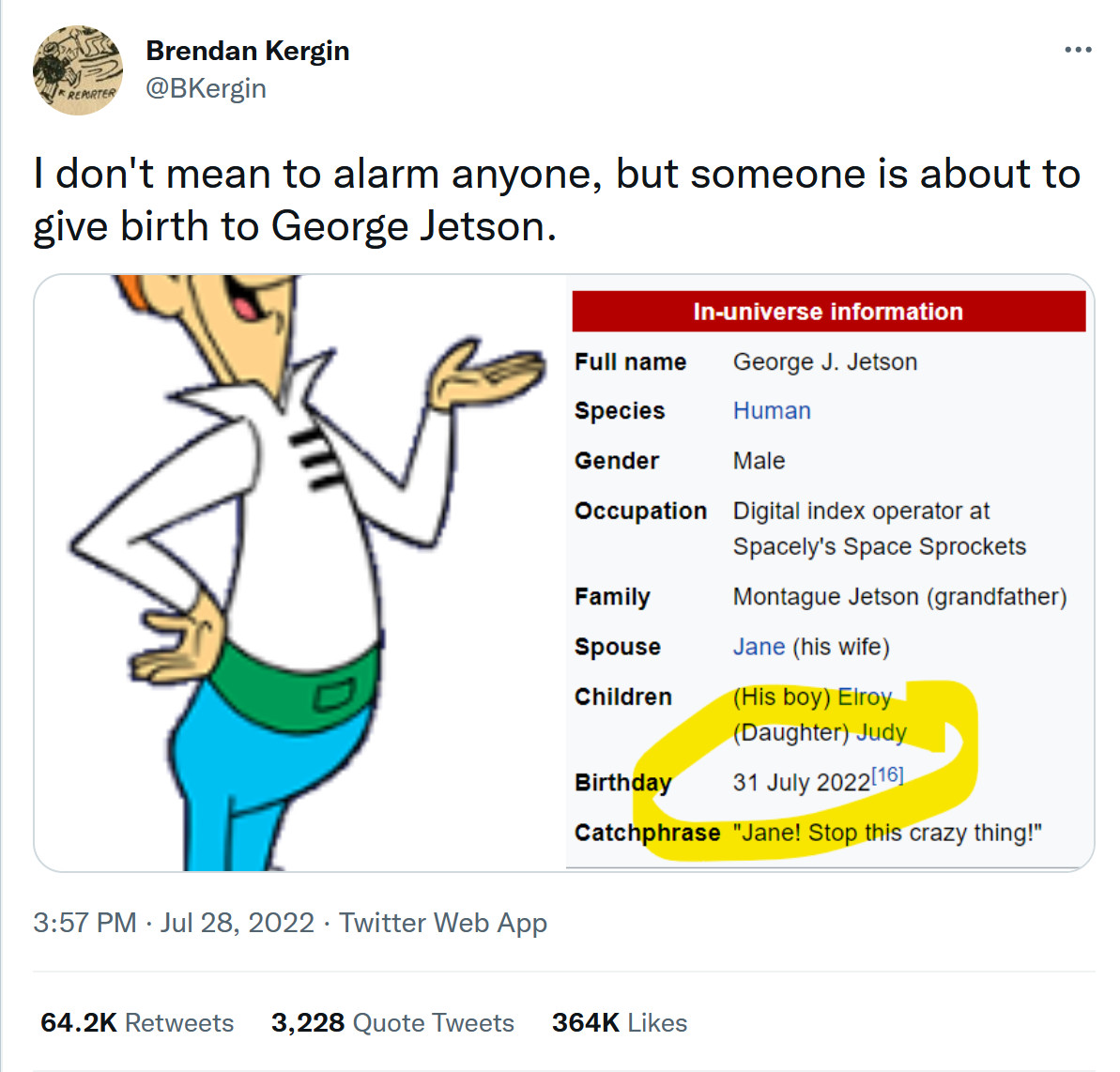THEY’RE LEARNING THAT THE GOVERNMENT CAN’T — MORE ACCURATELY, WON’T — PROTECT THEM: “Black Women Who Once Hated Guns Are Embracing Them as Crime Soars.”
Archive for 2022
July 31, 2022
EVERYTHING IS GOING SWIMMINGLY. WHY DO YOU ASK? Bank of America Memo, Revealed: “We Hope” Conditions for American Workers Will Get Worse.
GOODER AND HARDER, NEW YORK: SPAM goes on lockdown due to inflation in NYC.
It’s the nation’s crises in a can.
Inflation and crime have gotten so bad in Gotham that even cheap meat like Spam has to be locked up.
At Duane Reade’s store in the Port Authority bus depot, the shelf-stable product — only $3.99 a can — is now being stocked in plastic, anti-theft cases.
“I’ve never seen that before!” one cashier laughed while using a magnet to remove a can of Spam from its cage.
The cashier was among the employees, tourists and store regulars stunned that the iconic blue-and-yellow cans are now being kept under lock-and-key — some even poking fun at the sight as “a sort of Jeff Koons homage,” per one viral tweet.
Jenny Kenny, 43, who was visiting from Louisville, KY, was aware of the ongoing crime waves hitting cities like New York and San Francisco, but still couldn’t believe the sight of “so many things in boxes.”
Back in 2013, I wrote a lengthy post on Charles Bronson’s first Death Wish movie, filmed on location in the clapped out, crime-ridden Manhattan of the 1970s, and concluded:
In contrast, New York has improved immensely since the period depicted in the original 1974 Death Wish. Naturally, New York’s bourgeois-bohemians, as David Brooks would call them, would welcome a chance to return to the hell of Manhattan in the ‘70s, as Daniel Henninger noted in a 2005 Wall Street Journal article:
The actor John Leguizamo: New York in the ’70s “was funky and gritty and showed the world how a metropolis could be dark and apocalyptic and yet fecund.” Fran Lebowitz, a contributing editor for Vanity Fair: The city “was a wreck; it was going bankrupt. And it was pretty lawless; everything was illegal, but no laws were enforced. It was a city for city-dwellers, not tourists, the way it is now.” Laurie Anderson, a well-known New York artist and performer, admits the ’70s were considered “the dark ages” but “there was great music and everyone was broke.”
* * * * * * *
New York is famous for many things, and the reason the whole world knows this is because New York is a city of artists and writers. Though genius may find its muse anywhere, the Times’ commentators are correctly saying that most artists need to have personal flint chipping at social steel to spark the furnace within. But could it be that New York’s great weakness–beyond the public employee unions, beyond the economic obtuseness–is that its leadership elites are fatally enthralled by a reputation for creative fecundity that has been conjured and kept afloat by the city’s artists and writers? At the center of this New York myth is the belief that everyone here is clever, and so “anything is possible.”
But it isn’t. Everyone here isn’t clever.
Over eight years in the 1970s, New York lost more than a half-million private-sector jobs, according to E.J. McMahon and Fred Siegel of the Manhattan Institute, whose essential travel guide to these years and their aftermath may be found in the current Winter issue of the Public Interest. During the 1970s the real New York nightmare wasn’t lived in the SoHo funkytown, but in the funkless outer boroughs.
Many of the city’s most creative people in the 1970s (as now) were high IQ boys and girls from Smalltown who fled to the Apple and had the smarts to survive and thrive in a city beset with drugs, welfare dependency and housing stock distorted by World War II rent controls. Hell has always seized over-developed imaginations. But what attractions hath hell for average Joes who can’t cop a “life” in SoHo or Williamsburg? Then as now, they just took hell’s hits in the neck, or left. In economic terms, much of creative Manhattan simply “free-rides” on the backs of the workers whose tax payments constrain the bankruptcy sheriff.
As Kyle Smith wrote this month, today he and fellow New Yorkers “grouse about soda bans and Citi Bikes. Twenty years ago, we worried about being mugged or murdered. Electing a Democrat who demonizes the police would ignore the luxury provided by two decades of safety.”
And here we are.
NOW OUT: From Tony Robbins, Life Force: How New Breakthroughs in Precision Medicine Can Transform the Quality of Your Life & Those You Love. #CommissionEarned I read over the book last week and it was actually quite inspiring.
BE PREPARED: Men’s Ratchet Belt for Concealed Carry. #CommissionEarned
HIGHER EDUCATION BUBBLE UPDATE: The True Cost of Federal Student Loans. “The Education Department said the federal student loan program is generating billions in income for the federal government. A new report from the GAO shows that it is causing billions in lost revenue due to flaws in budget estimates.”
THESE AREN’T EVEN FIRST-WORLD PROBLEMS: Professor worries Marvel’s ‘Atlantis’ will use cultural appropriation, colonial racism.
AN EARTH-SHATTERING KABOOM: Ukrainian drone strike hits Russia’s Black Sea HQ.
ALSO, BIG LOSSES SPUN AS WINS, OR IGNORED ENTIRELY: White House Report Card: Weak wins spun as big victories.
MISTER WE COULD USE SOME MEN LIKE MILTON FRIEDMAN AGAIN: Today would be Milton Friedman’s 110th Birthday.
NEW MEDIA RULE: Don’t Say Gay.
Related: Monkeypox Primarily Affects Gay Men. Why Are We Scared to Say It?
DEAL OF THE DAY: Men’s Slim AirTag Wallet with Money Clip. #CommissionEarned
HE’S RIGHT BUT IT WON’T HAPPEN: Barr to Garland: Time for a special counsel to investigate Hunter Biden — and maybe Joe. Well, unless the Party wants to get rid of Joe. Then Merrick will be on it posthaste.
HOW IT STARTED:
I reach the Reichstag dome’s upper platform, its glass floor doubling as the ceiling of the legislature. This democracy–under–glass is more than just window–dressing: Years of freewheeling multiparty debate have produced a remarkable national consensus. At an earlier press conference, I heard the impressively well–nourished federal minister of economics and technology boast that his conservative government would “march at the forefront to solve the mega–issue of climate protection—other nations can just follow!” He itemized the eco–Anschluss on stolid fingers: German wind farms in the North Sea; German hydropower plants in the Balkans; German windmills in Romania; German solar thermal projects in Spain; a vast half–trillion–dollar complex of solar turbines in the Sahara that will surge gigawatts to whole swaths of Europe. The goal of a carbon–free economy by mid–century may be, as one local enviro put it to me, das Blaue vom Himmel—“a hopeful blue sky”—but when the minister uttered the phrase “to rescue the world,” it sounded like he meant it.
—Marc Barasch, “How Green is My Berlin,” in the September 2010 issue of Condé Nast’s Traveler, as I quoted back then in an article titled, “Springtime for Algore: A Romantic Pilgrimage to Germany’s ‘Eco–Anschluss.’”
How it’s going:
Cities in Germany are switching off spotlights on public monuments, turning off fountains, and imposing cold showers on municipal swimming pools and sports halls, as the country races to reduce its energy consumption in the face of a looming Russian gas crisis.
Hanover in north-west Germany on Wednesday became the first large city to announce energy-saving measures, including turning off hot water in the showers and bathrooms of city-run buildings and leisure centres.
Municipal buildings in the Lower Saxony state capital will only be heated from 1 October to 31 March, at no more than 20C (68F) room temperature, and ban the use of mobile air conditioning units and fan heaters. Nurseries, schools, care homes and hospitals are to be exempt from the saving measures.
“The situation is unpredictable,” said the city’s mayaor, Belit Onay, of the Green party. “Every kilowatt hour counts, and protecting critical infrastructure has to be a priority.”
—“German cities impose cold showers and turn off lights amid Russian gas crisis,” the Grauniad, Thursday.
COVID IS OLD NEWS, I’M WAITING FOR BIDEN’S MONKEYPOX DIAGNOSIS: Biden’s Latest COVID Diagnosis Nukes What’s Left of the COVID Panic Regime.
Related: Reporters Nail Biden for Blowing off COVID Guidance in Another ‘Rules for Thee’ Moment.
WHY, WHATEVER COULD ACCOUNT FOR THAT? “What’s the worst performing stock in the Dow Jones Industrial Average so far this year? Disney. The Mickey Mouse company, headquartered in Burbank, has lost about 35% of its value this year versus a nearly 15% loss for the broader index.”
July 30, 2022
BE PREPARED: Amerex 322, 5lb Carbon Dioxide Class B C Fire Extinguisher. #CommissionEarned
UPDATE (FROM GLENN): We have a couple of these, and I’ve used one once. They work very well and are surprisingly powerful. I like them for kitchen/grill use because they don’t leave a mess like a dry chemical extinguisher.
You want fire extinguishers, smoke alarms, and carbon monoxide alarms.
WELL, TO BE FAIR, THAT’S ONLY BECAUSE HE’S TERRIBLE, AND SO IS HIS ENTIRE ADMINISTRATION: Grim milestone: Biden has worst job approval at this stage of any modern elected president. “Since Gallup started polling presidential approval in the 1950s, in fact, no one has ever rated more poorly in the summer of his second year than Biden.”
And, I should note, he’s rated this poorly in spite of every significant institution — the federal government, the press, the entertainment media, big tech — going to comically ridiculous lengths to prop him up and silence his critics.
Related: The ‘cabal’ that bragged of foisting Joe Biden on us must answer for his failed presidency.
OPEN THREAD: You’ve been waiting for this all day.
MARK JUDGE: Weak Dissent. Another Lazy, Dumb, and Error-Packed Book About Me in High School.
Jackie Calmes, a respected veteran journalist at the Los Angeles Times, has a new book out. It’s called Dissent: The Radicalization of the Republican Party and Its Capture of the Court. The focus is Brett Kavanaugh’s elevation to the Supreme Court in 2018. Dissent is full of errors, and I make an appearance early on.
In fall 2018 the political left and the media tried to destroy Kavanaugh, a high school friend of mine. Using opposition research, extortion threats from criminals and an attempted honey trap, the left tried to make me the nomination about me. A woman named Christine Blasey Ford accused Brett of sexually assaulting her in 1982 when we were all in high school. Ford claimed that I was in the room when it happened.
I Am Iron Man, Apparently
You can add the contents of Dissent to the long list of intentional media calumny about me, Brett Kavanaugh and Georgetown Prep, the high school we attended. At various times in fall 2018, our East German Stasi media told the public that I’d presided over ten gang rapes. That I’d bought and sold cocaine. That all in all I was a volatile mix of Tom Cruise, Mel Gibson and King Kong.
Vanity Fair had to issue a correction admitting that a woman who’d said we went to college together in fact had attended a different school. The Washington Post withheld an exonerating witness from their explosive first story about Ford. NBC’s Kate Snow withheld damaging facts about Michael Avenatti, whose fever dreams of drugs and gang rapes were touted by New York magazine as the end of Kavanaugh. Avenatti is now awaiting sentencing for extortion and has two more criminal trials coming up.
Read the whole thing.
NEW MEDIA RULE: DON’T SAY GAY.
Mainstream journalists have adopted what critics are calling a “don’t say gay” approach to covering the monkeypox outbreak in the United States. The media’s coverage of monkeypox, which officials in New York and California have declared a threat to public health amid rising case numbers, has studiously avoided using the word “gay” when discussing the individuals who are most at risk of contracting the viral disease.
Journalists insist on using the phrase “men who have sex with men”—decades-old terminology often used during the AIDS epidemic—to explain the fact that gay and bisexual men comprise about 98 percent of more than 18,000 monkeypox cases worldwide. Some left-wing activists have argued that even pointing this out is “stigmatizing,” while more sane individuals have suggested this is “particularly important information for gay men to know.”
In other monkeypox news:

More here: San Fransisco To Hold Gay Sex Festival Despite City Declaring Emergency Over Monkeypox Outbreak.


